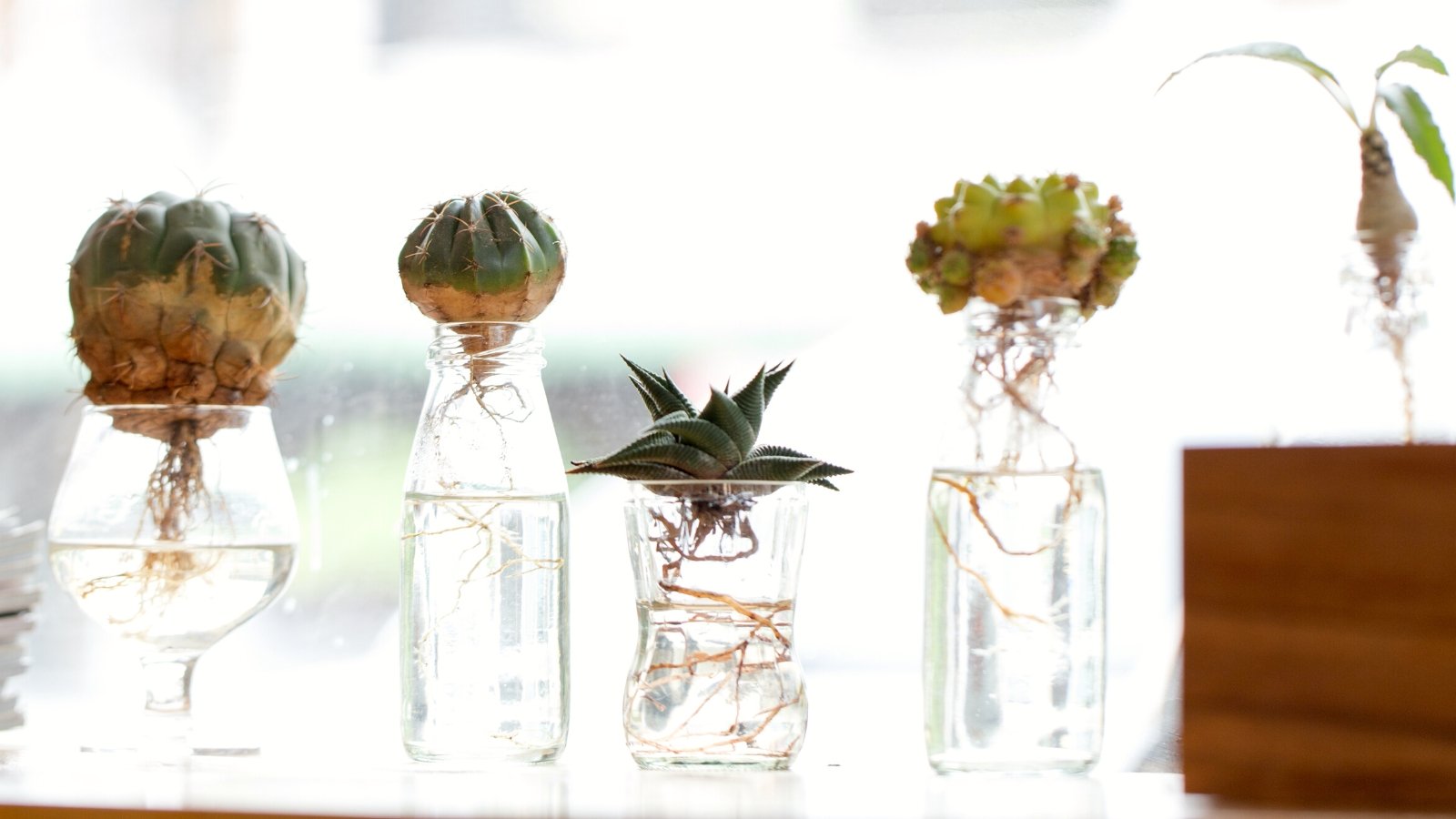Succulents are beloved for his or her low-maintenance nature. These vegetation are often not fussy and typically develop increased when left alone. Watering is probably going one of many solely duties to stay on excessive of (nonetheless water sparsely, considering their drought tolerance). There is a methodology to take watering out of the equation, too – hydroponics.
Succulents are often not glorious candidates for rising in water for causes we’ll deal with later. However it absolutely’s not unimaginable each, albeit harmful, if you would like your succulents to stay alive long-term.
There are a few reason gardeners do that methodology and likewise a few good causes to not. Let’s check out the professionals and cons and step-by-step to answer whether or not or not succulents can develop in water.
What Are Succulents?
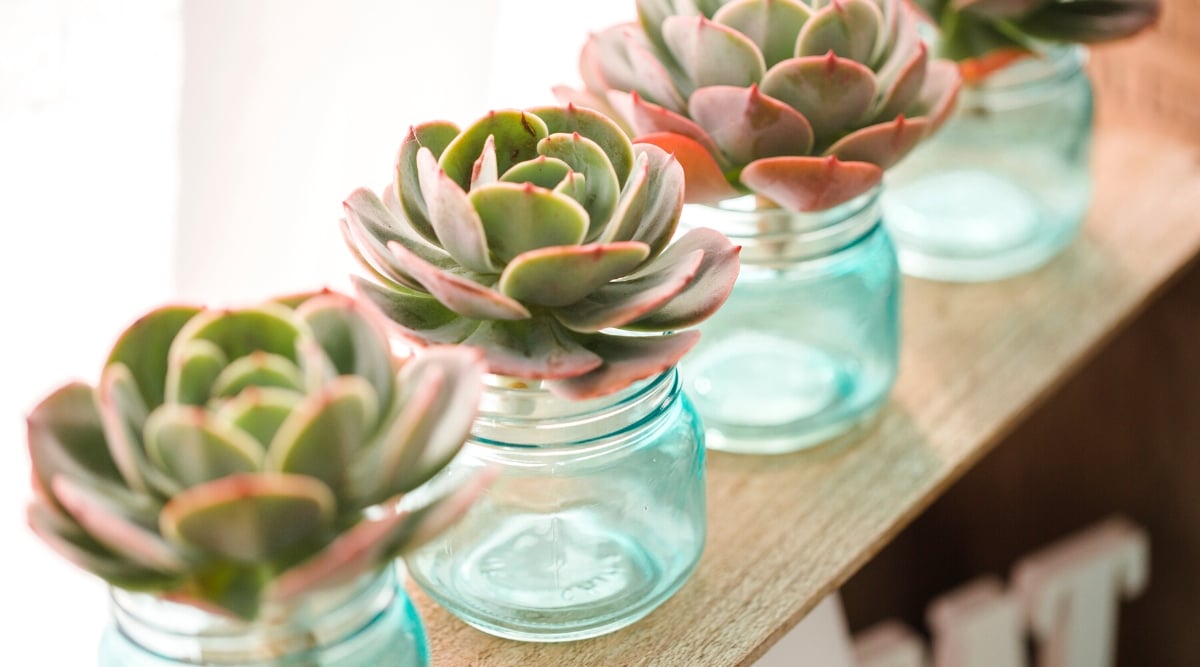

Succulents are a bunch of vegetation outlined by their potential to retain water of their leaves. Originating from environments with drier soil or a lot much less rainfall, they developed to retailer additional moisture of their leaves and stems to help progress in situations of drought.
Succulents are typically paired with cacti, nonetheless there is a distinction between the two. Cacti are vegetation throughout the family Cactaceae, whereas succulents are extraordinarily quite a few and have a wide range of households, genera, and species. To simplify the excellence, all cacti are succulents, nonetheless not all succulents are cacti (although you may disagree with even that, counting on what scientific space you’re in).
Due to their native environments, succulent rising conditions are just a bit fully completely different from completely different vegetation you will have experience with, notably indoors. Most respect a full day of direct photo voltaic and develop biggest in gritty soil that drains correctly. As they retailer water, they don’t need watering sometimes and like soil to remain dry barely than soggy.
Although these conditions are less complicated to duplicate exterior, succulents have flip into in fashion amongst houseplant lovers, too. One in every of many strategies indoor growers attempt to root or fully present their succulents is hydroponically (in water).
Can Succulents Develop in Water?
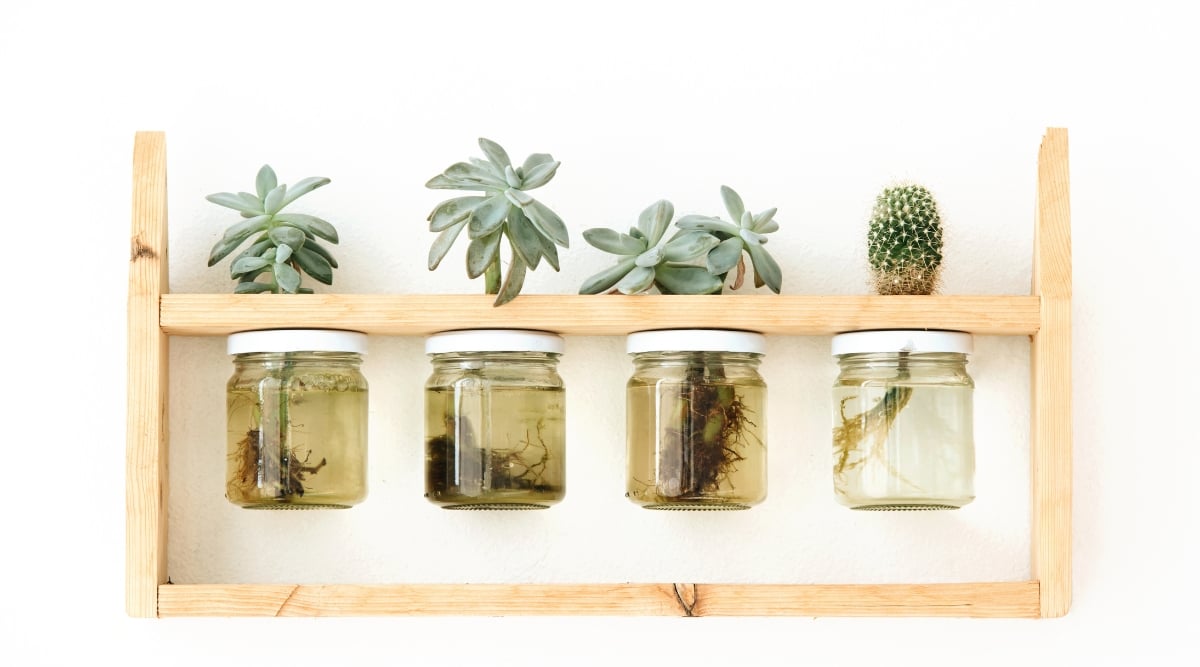

Given their want for restricted watering, it’s wise to think about succulents can’t develop in water. Nonetheless, if you’ve ever tried rooting a broken stem or stray leaf in water, you will have found they develop roots pretty quickly.
Technically, it is potential to develop succulents this fashion, nonetheless there are caveats.
I wouldn’t advocate attempting to develop succulents hydroponically long-term. It’s not unimaginable, nonetheless the hazard of rotting or lack of progress is extreme, making it far simpler to develop in soil if you happen to want to maintain your succulents alive.
Succulents are often not tailor-made to sitting in persistently moist soil, to not point out water fully. There are a few causes you may want to try it, nonetheless there are moreover causes it’s not top-of-the-line thought.
Causes To Develop Succulents In Water


The proper function for using water to develop succulents is to root cuttings for propagation. Succulent stems root correctly in water, capable of be transplanted into the soil as quickly as they’re a few inches prolonged. Although there’s an elevated hazard of rot sooner than roots develop, rooting in water does will allow you to monitor progress. It’s often sooner than rooting in soil, too.
There are moreover the benefits of hydroponics to consider. Lack of soil simplifies care and avoids any messy mishaps, notably if you’re holding your succulents indoors. It reduces the hazard of soil-borne pests and illnesses attacking your vegetation. And as they’ll be sitting in water fully, you gained’t need to fret about monitoring soil moisture to water on the nice time.
Causes Not To Develop Succulents In Water


These benefits do embrace a few important downsides, an essential of which is rot. Succulents are liable to rot when uncovered to an extreme quantity of moisture, so the hazard of your plant dying prior to it’s going to planted throughout the soil is extreme.
Improvement will doable be slower, too, because of less-than-optimal environment and restricted home. This may not be an issue for small indoor reveals, nonetheless take note of that your succulents will look far happier and develop to their full potential when planted in soil in its place.
Lastly, although maintenance in soil care and watering is lowered, there are completely different care duties to complete if you happen to want to develop succulents hydroponically. The water should be topped up persistently to stop the roots from being uncovered to the air and adjusted sometimes to cease bacterial buildup. For long-term reveals, you’ll moreover should add nutritional vitamins to the water to gasoline progress.
Considering the downsides, I steer clear of using water and like to remain to soil. It’s a so much higher environment for the vegetation and avoids the frustration of an early dying. However it absolutely’s exhausting to deny the consolation and visual benefits of the hydroponic methodology, making it worth a try in case you will have a succulent you’re eager to hazard.
Which Succulents Develop Successfully In Water?
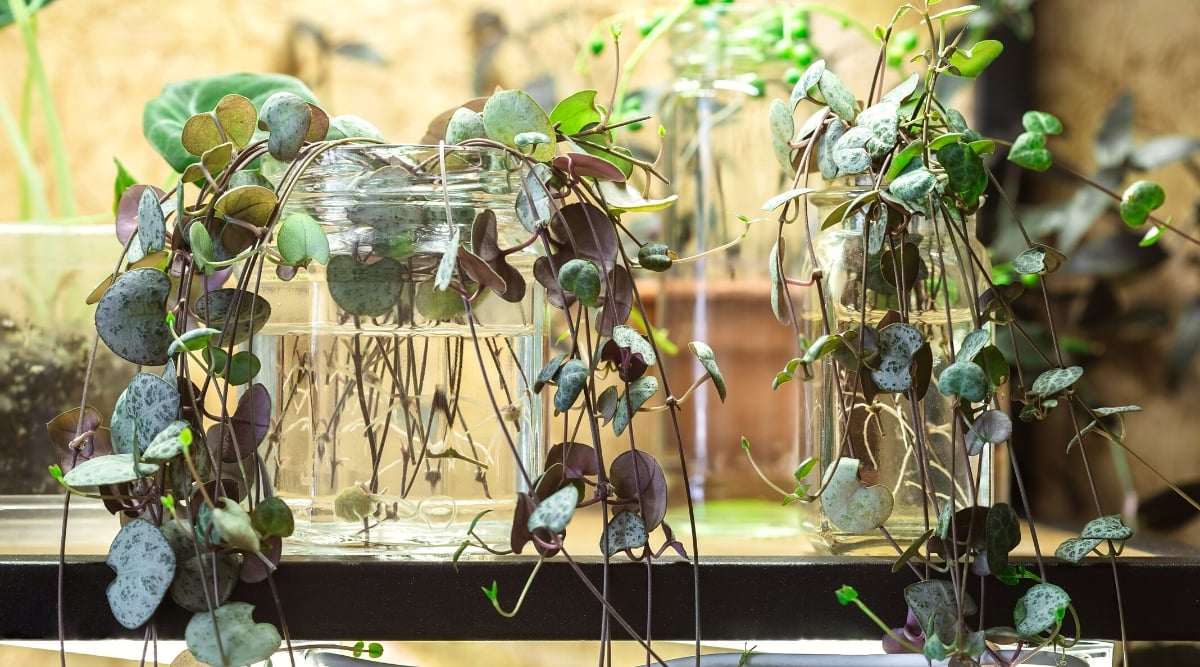

If you do want to make use of the water methodology effectively, it’s important to start out out with the becoming vegetation.
Whereas it is potential to transplant from soil to water, the potential for rot is much elevated than starting with cuttings. The roots formed in soil are barely fully completely different from these formed in water, and soil roots accustomed to a great deal of airflow and dry soil will not be joyful plopped proper right into a glass of water.
It’s biggest to resolve on a plant that’s ready for propagation, with an prolonged stem that will stretch near the water and maintain the leaves dry. Start with cuttings to allow the plant to increased adapt to hydroponic rising.
Taller succulents are moreover less complicated to root in water than shorter ones. This gives you a bit little bit of respiration room for topping up the water and avoids moisture sitting close to the leaves, risking rot.
These are the succulents most start out with when rising hydroponically, rooting quickly in water:
- Echeveria
- Crassula
- Sempervivum
- Ceropegia
- Kalanchoe
How To Develop Succulents In Water
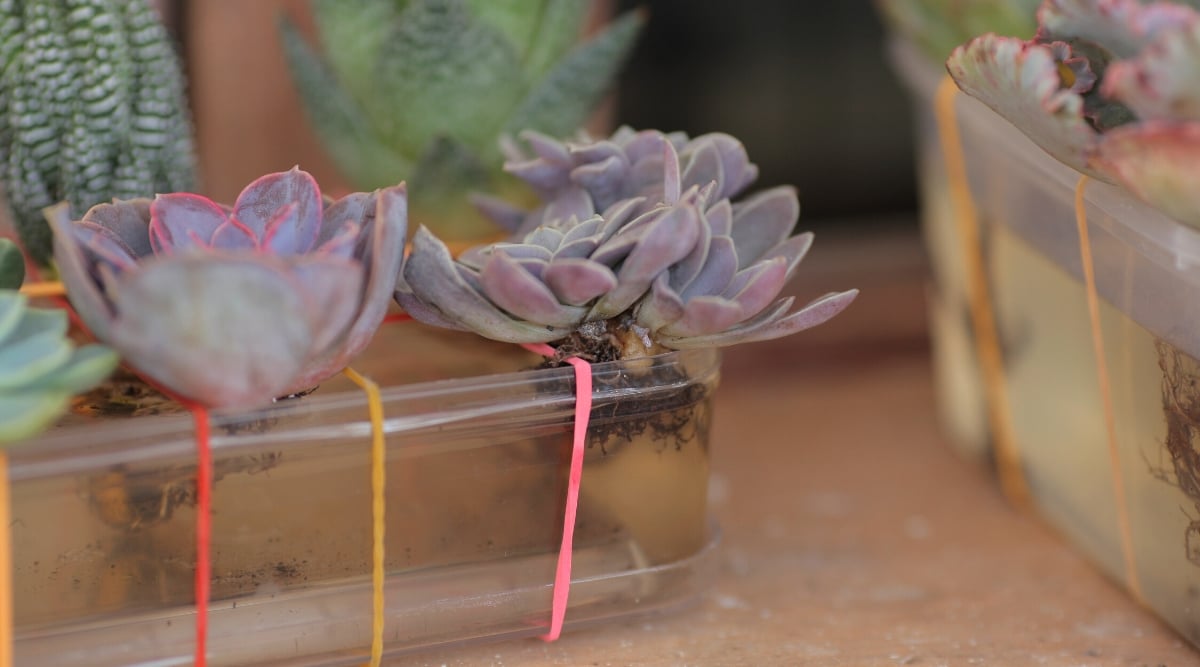

If you’ve chosen your plant, it’s time to get it throughout the water. You’ll desire a glass vase or jar, shears, and clear plastic wrap. Observe these steps to get started:
- Trim the chopping. Using sharp and clear shears, take away a stem from an present plant. Ideally, you want spherical 4 inches of stem for easier rooting and care, nonetheless shorter stems moreover work.
- Take away any leaves from the underside third of the stem. This stops any leaves from sitting throughout the water whereas sustaining the type of the succulent.
- Allow the chopping to heal. Depart it on a little bit of newspaper for just a few days to allow the open areas to callous. This reduces the hazard of rot early on.
- Fill a jar with water and cover the opening with plastic wrap. Make a niche throughout the coronary heart for the stem to swimsuit by the use of, holding it in place and holding the leaves dry. In case your succulent is very large enough to leisure on the jar opening with out the leaves falling in, you probably can skip this step.
- Place the chopping throughout the jar so the stem sits merely above the water line. You can submerge the stem, nonetheless it would rot sooner than any roots develop. Sustaining it merely out of the water and sustaining that water diploma intently permits roots to develop downwards into the water, holding the rest of the plant dry.
- Place the jar in a sunny spot and proceed to excessive up the water as needed. Change the water incessantly. Change it totally and clear the jar if you uncover any bacterial buildup.
Remaining Concepts
Using water to develop succulents is not glorious for the nicely being of the vegetation, but it surely absolutely’s moreover not unimaginable. Observe these steps if you happen to want to give it a try indoors.
